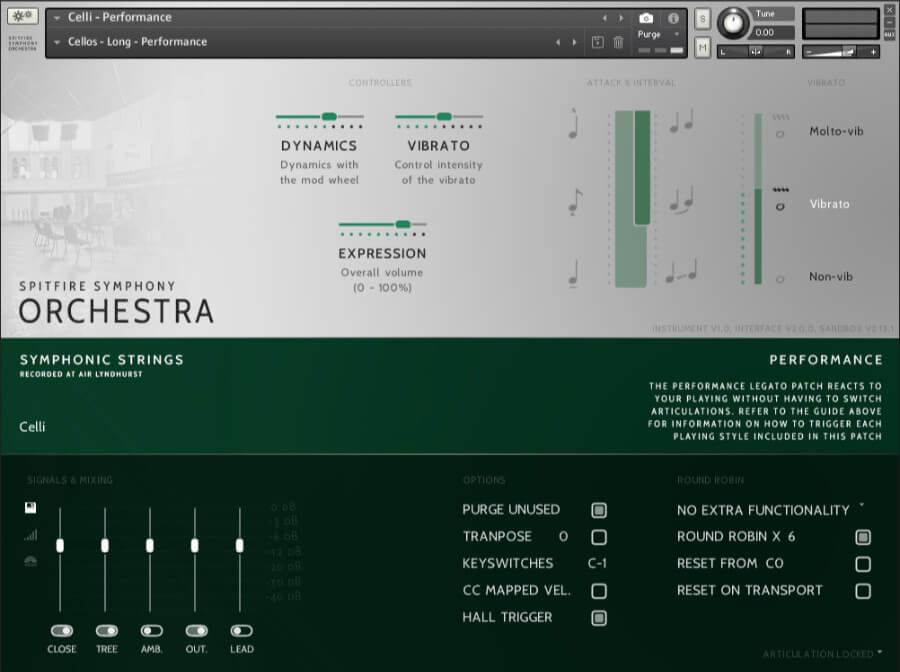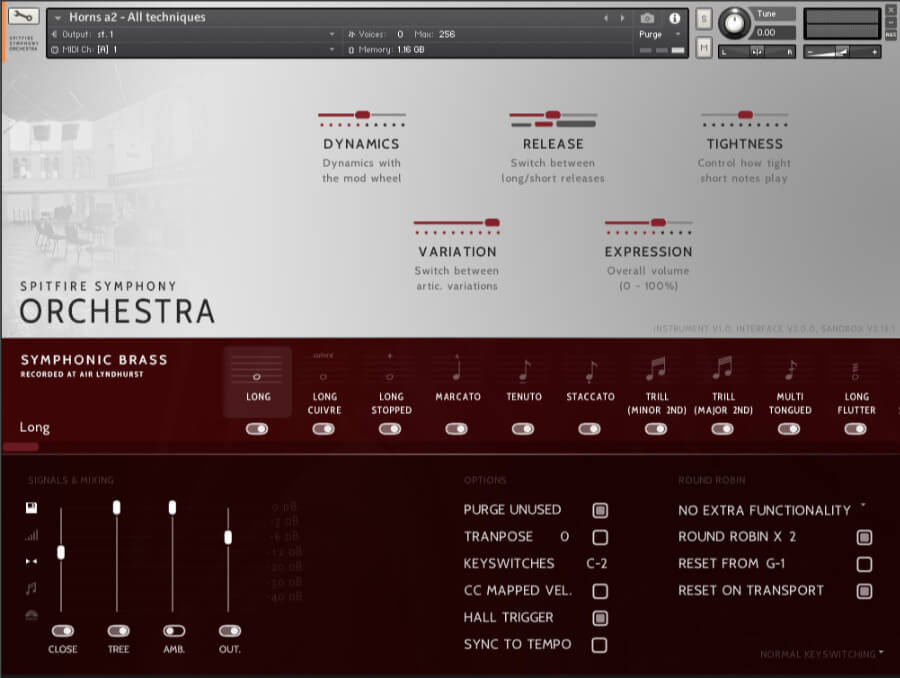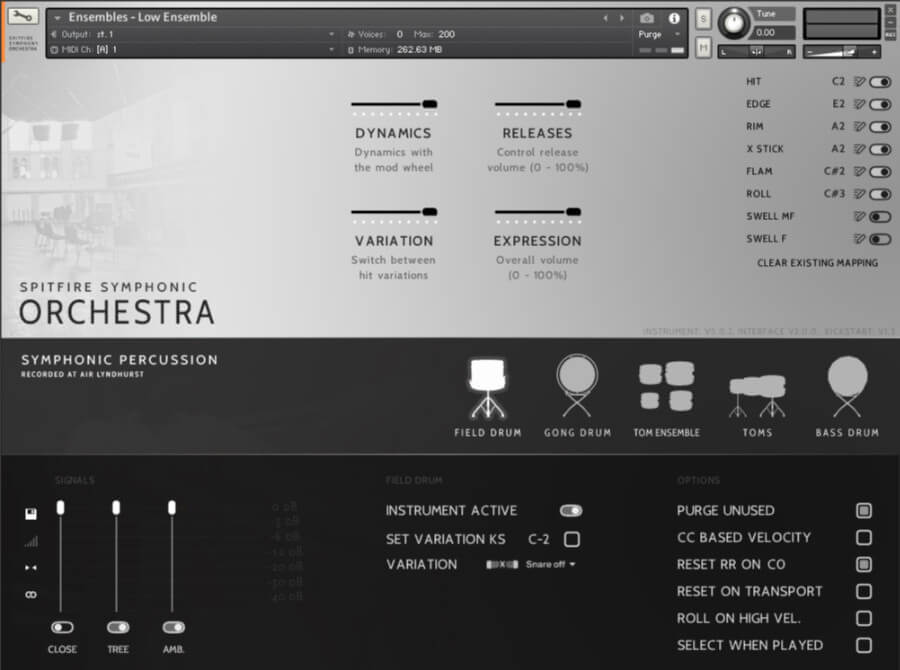Spitfire Symphony Orchestra is a favorite among top - notch composers. It features full symphonic string, brass, and woodwind sections, including solo instruments, plus harp, piano, and all essential percussion elements. This gives your music a professional and standout sound. Recorded at AIR Studios' Lyndhurst Hall in London, it was performed by a gold - generation of musicians who've been on top film scores in the last decade. These blockbuster sounds are some of Spitfire Audio's best and most classic recordings. They're flagship virtual instruments used by top composers and music - makers worldwide, contributing to hundreds of AAA film, game, and TV scores in the past decade. The updated version in Kontakt 7 has a redesigned interface, refined sample content, and new legatos by Andrew Blaney. In 2025, three amazing soloists were added: Andrew Haveron on solo violin, Bruce White on solo viola, and Caroline Dale on solo cello. There are three legato transition types and three mic signals for perfect mixing. The symphonic strings library has 60 of the world's best players performing over 175 articulations, with four mic positions. The brass and woodwind sections are also top - quality, each with unique features and updates in 2025. The percussion, piano, and harp add to the orchestra's completeness, with various instruments and mic positions. The AIR Lyndhurst Hall, where many famous scores were recorded, has unique acoustic properties that enhance the sound.




Using Spitfire Symphony Orchestra is a breeze. First, make sure you have Kontakt 7 installed to access the redesigned interface. When you start using it, explore the different sections - strings, brass, woodwind, percussion, piano, and harp. For the strings, you can choose from 60 world - class players and over 175 articulations. Try different mic positions like Close, Tree, Ambient, and Outriggers to find the best sound for your mix. If you're using the solo instruments, enjoy the unique playing styles of Andrew Haveron on violin, Bruce White on viola, and Caroline Dale on cello. You can experiment with the three legato transition types to add more expressiveness to your music. For the brass and woodwind sections, they offer a wide range of instruments and articulations. Use the Ostinatum mode for repetitive patterns. When it comes to the percussion, piano, and harp, take advantage of the different mic positions to blend them well with the other sections. Remember, since this is a virtual instrument, make sure your computer has enough processing power to handle it smoothly. Also, keep exploring different combinations of instruments and articulations to create your unique sound. Don't be afraid to experiment with the new features added in the 2025 update, like the Total Performance patches for solo trombone and principal oboe. Have fun creating world - class music!
